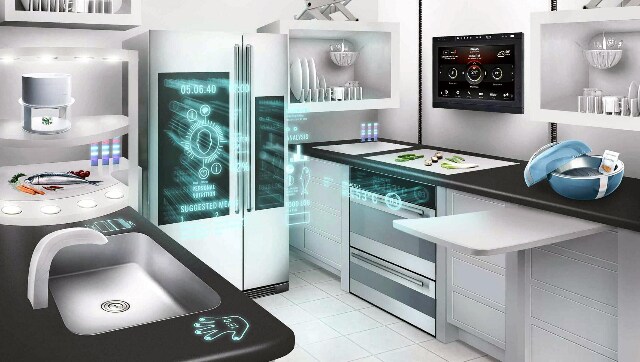More than 50 per cent of smart appliance users don't enable IoT services or smart features
Nearly half of smart home-owners, do not use IoT or the smart features that their appliances come with. This is mainly because of fears over privacy, and the fact that these IoT services try to sell ancillary services like repairs and servicing.

Nearly half of smart home-owners, do not use IoT or the smart features that their appliances come with. This is mainly because of fears over privacy, and the fact that these IoT services try to sell ancillary services like repairs and servicing.
A recent study has revealed that nearly 50 per cent of owners of smart appliances like smart refrigerators, smart microwaves and smart air conditioners, do not actually use the IoT services or smart features in these appliances. This has left Whirlpool and LG in a rather precarious position.
Appliance makers like LG, Whirlpool and Samsung have added Wi-Fi antennae to their latest dishwashers, ovens, and refrigerators and built apps for them, spending billions, if not million in the process. The idea was, that customers would use these smart features to buy relevant replacement parts or subscription services. Moreover, these manufacturers wanted to serve ads on these smart devices, and have a completely different source of revenue. But most importantly, it would have provided manufacturers with data and insights about how customers are using their products.
The issue, according to manufacturers quoted in a Wall Street Journal report is that consumer doesn’t see the true value that manufacturers see in terms of how that data can help them in the long run. So they don’t really care for spending time to just connect it, Moreover, there is the issue of privacy and the fact that most of these appliances are either made in China, or made using components sourced from China. The silicon chip, for example, is almost certain to have been sourced from China.
What this means is that companies are missing out on service revenue, which is increasingly crucial to manufacturers facing rising input costs, declining replacement purchases, and ever-demanding shareholders.
LG for example saw an incremental increase in water-filter sales when it tracked water volumes on connected fridges versus non-connected fridges, the company told the Wall Street Journal.
As convenient as the promise of smart homes or IoT-enabled homes may be, they do very little to allay the fears of users having their privacy thrown for a toss. There have been numerous instances of camera-enabled IoT devices uploading inappropriate pictures that it took at random to their servers.
The only way this can be tackled is by a rating system that clearly indicates what sort of data a device collects, how frequently, and where is the data stored. More importantly, though, companies have to be honest and transparent in their dealings and allow users to opt out of services they are not interested in. Unfortunately, tech companies and appliance makers have shown users time and time again that it is futile to expect this from them.
Read all the Latest News, Trending News, Cricket News, Bollywood News,
India News and Entertainment News here. Follow us on Facebook, Twitter and Instagram.
also read

Fundamentals of security for a world connected through Internet of Things
What then is this Internet of Things that has the world in a tizzy? Is it really as good as it sounds on paper?

IoT devices will be a prime target for Cybercriminals in 2017
Cybercriminals will use distributed denial of service (DDoS) attacks in 2017 to extend their reach as there are now several Internet of Things (IoT) devices containing outdated codes and operating with well known vulnerabilities, a global security firm warned on Monday.

Google updates its Internet of Things platform, Brillo is now Android Things
Google has announced new technologies for engineers developing Internet of Things (IoT) products and packaged the platform as Android Things
